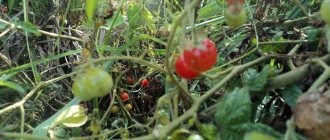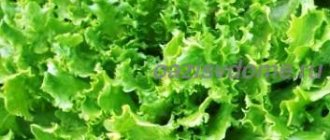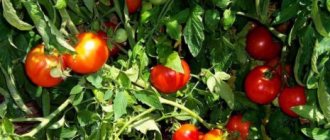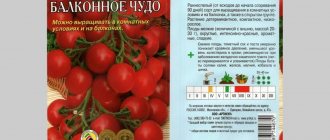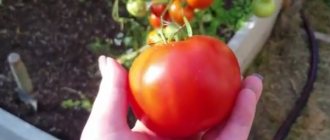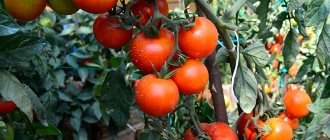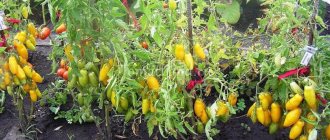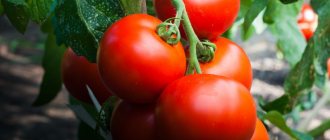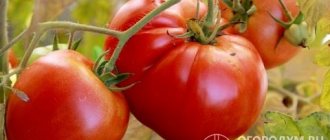Slivka, as well-known vegetable growers and breeders report, is not a separate variety of tomatoes, but a whole group of tomato crops. Gardeners are very fond of this species because the tomatoes are very sweet and are ready for transportation and long-term storage. Another advantage is that the Slivka tomato comes in different colors - yellow and red cream, orange and pink tomatoes. Not so long ago, even black varieties of cream were developed. They look very decorative, and salads from them are not only incredibly tasty, but also very beautiful.
In this article we will dwell in more detail on the description of the tomato species called Slivka and identify the most characteristic features and characteristics of this group of tomatoes. We will also list several of the most popular varieties that have already become a favorite among gardeners in various regions of our country.
Advantages and disadvantages
Of interest to summer residents are all the features of popular tomatoes.
| Advantages | Flaws |
| Excellent sweetish taste of dense pulp | Low juiciness, which does not allow tomatoes to be used for juice production |
| Simple agricultural cultivation technology | Carrying out for some tall species activities on pinching, gartering, shaping |
| High fruit resistance to cracking | |
| Friendly aging | |
| Preservation of commercial qualities of ripened tomatoes during transportation | |
| Stable high yield | |
| Versatility in use (canning, drying, preparing fresh salads, drying) | |
| Long-term storage of fresh tomatoes | |
| Rare pest damage, disease resistance |
Video
Next you will see a video review of the best varieties of tomatoes:
| Early ripening | Mid-late | Mid-early |
| Raspberry Viscount | Yellow banana | Pink Bush F1 |
| The Tsar Bell | Titanium | Flamingo |
| Kate | Slot F1 | Openwork |
| Valentina | Honey fireworks | Cio Cio San |
| Cranberries in sugar | Miracle of the market | Supermodel |
| Fatima | gold fish | Budenovka |
| Verlioka | De Barao black | Major F1 |
In which regions of Russia can the Slivka tomato be grown?
The unique “Slivka” tomatoes can be cultivated in all regions, provided that climatic conditions are taken into account.
Ural
In the Ural territory, where an unstable harsh continental climate predominates, “Slivka” is used for growing all varieties of tomatoes using seedling technology. The seedlings are moved to greenhouses in May. Transplanting to open ridges is practiced in the first ten days of June.
Siberia
Summer residents successfully obtain a good harvest of tomatoes of the “Slivka” variety in Siberia using seedling technology. Grown seedlings are usually moved to the greenhouse after May 10. It is more difficult to grow tomatoes in beds, since you need to wait until the return frosts have completely stopped before planting seedlings. This period begins in mid-June. To preserve young plants, they install arcs on which spunbond sheets or film are stretched.
Moscow region and central Russia
In the vast Russian territory belonging to the central zone, including the Moscow region, the Slivka tomato is cultivated with good results in open beds. Seedlings are planted at the end of the spring season. In order to obtain earlier ripened fruits, greenhouses are used.
Southern regions of Russia
In the south, a variety of “Slivka” tomatoes are cultivated using the method of direct sowing on previously prepared beds. It is important to carry out this event in the last ten days of April, while the soil is saturated with sufficient moisture.
Biological features
Cream tomatoes are an annual plant of the Solanaceae family. The tomato has a highly developed root system and has several adventitious roots. The stem of the plant can be straight or lodging. Tomato is divided into two types: determinate and indeterminate.
The green leaf may be solid or jagged. The plant is most often self-pollinating. The inflorescence is small, yellow.
Tomatoes are heat-loving vegetables that do best in sunny areas. For proper development, a temperature of around +25 degrees is required. With a sharp cold snap, the plum tomato stops flowering and growth.
Planting tomato seeds
To obtain high-quality viable seedlings, sowing “Slivka” tomatoes is practiced at the turn of February-March. It is taken into account that the age of the seedlings at the time of moving to a permanent place is 55-65 days.
Seed preparation
The seed material is carefully examined. It is calibrated by removing excessively small, spoiled, dried grains.
To improve germination, the highest quality seeds are then immersed in a salty liquid (10 g of salt/250 ml). Floating specimens are thrown away. The full grains remaining at the bottom are rinsed. They can be sown immediately. If the event is planned to be held later, scatter the seed on a napkin and dry it.
Disinfection of seed material purchased in specialized stores is not required. But self-harvested grains need to be kept in a slightly pink solution of potassium permanganate for 25-30 minutes.
Sowing seedlings
For good growth of tomato seedlings, a nutritious, breathable substrate is required, which is easy to purchase.
If in the fall you managed to stock up on garden soil and turf soil, then combine them in identical volumes with sand and peat. Spill with a pink disinfecting solution of potassium permanganate or the EM-Baikal preparation.
Containers are filled with soil mixture. Mark grooves to a depth of 2.2-2.5 cm, along which the seeds are distributed, maintaining a gap of 4-5 cm. A distance of 9-10 cm should be made between the grooves.
If a small number of seedlings are grown, it is more convenient to use local small pots - cardboard, peat, glass, plastic. In each such container you need to sow 2-3 grains. Seedling containers must be covered with transparent material. Film or glass will do.
Keep at +18…+25°C in a bright room. The nurseries are regularly opened to ventilate and, if necessary, moisten the substrate. Remove the cover after the sprouts appear.
Hardening, picking seedlings
When 2-4 leaves are formed on the seedlings, the picking period begins. The general container is watered 1-1.5 hours before this procedure. Prepare cups by filling them with substrate.
Carefully remove the seedlings, lightly pinch the root and place it in a hole about 5-6 cm deep. Sprinkle the roots with soil, then spray the surface with settled water.
In separate cups, you only need to cut out the excess weakened sprouts, leaving the strongest specimen.
To ensure strong immunity, 1-1.5 weeks before the intended transplantation, containers with seedlings are transferred to the veranda or balcony during the day. Increase the hardening time gradually.
Landing in the ground
The area for “Slivka” tomatoes is given a sunny area with neutral, fertile, breathable soil. Do not use beds after nightshade crops.
In autumn, it is recommended to sprinkle humus on a surface cleared of plant waste, using 10 buckets per 10 m2. To increase fertility, organic matter is supplemented with superphosphate (500 g). You can add 5 cups of ash.
Where is the culture used?
To decide on the use of the grown crop of plum tomatoes, you need to know their basic qualities. Almost all varieties have fruits:
- with dense pulp and durable skin that does not crack under the influence of external influences;
- contain more sugar than acids;
- tolerate transportation well;
- retain their presentation for a long time;
- with a small amount of seeds.
Housewives value the cream harvest. Small fruits weighing 7-10 grams are used in salads, decorating dishes, drying and pickling. 30 gram tomatoes are also ideal for winter preparations. Sauces are prepared from them, and the fruits are rolled in their own juice.
Planting tomatoes with seedlings
Seedlings of Slivka tomatoes begin to be replanted when the soil in the garden warms up to 9-12°C.
Preparing seedlings
Seedlings must be watered abundantly on the eve of transplantation. This will allow you to avoid damaging the roots and stems during extraction, and also preserve the earthen lump. Peat cups are moved into the ground immediately along with the plants.
Rules for planting in open ground
If the tomato variety has fairly tall (60-90 cm) stems, then the following planting scheme is used - 60-50 cm. For compact, low-growing ones (30-50 cm), you can focus on 50x30 cm.
Pour ash (0.5 cup) and twice the volume of loose compost into the hole. The Glyokladina tablet will help protect developing plants from fungal infections.
Prevention of TMV
Tobacco mosaic manifests itself in these tomatoes, as in any others, primarily in a change in leaf color to variegated. In this case, light spots appear on the fruits. Unfortunately, antiviral drugs have not yet been developed for this disease. Therefore, when growing tomatoes of the Slivki variety, it is important to pay maximum attention to the prevention of TMV. For planting, you should use only high-quality seeds purchased from reliable sellers. In autumn, all tops from the beds should be removed and burned. The same goes for fallen leaves in the garden.
Growing the “Slivka” variety in a greenhouse
Under cover, with proper adherence to the basic rules, you can consistently obtain a bountiful harvest of tasty Slivka tomato fruits:
- Water is applied at the root, protecting the leaves from drops of liquid. If possible, install pipes for drip irrigation.
- Systematically ventilate the greenhouse, excluding drafts from entering the plants. You can install an automatic ventilation system.
- The soil, all structures, equipment, as well as surfaces inside and outside are sprayed with Bordeaux mixture (1%) in the fall.
- They provide reliable trellises, pegs, and nets for tying up stems.
How to salt
Thus, canning is what Cream tomatoes are best suited for. Harvesting them for the winter can be done using different technologies. But most often, like any other tomatoes, of course, they are simply salted in jars. For this:
- the fruits are thoroughly washed under running water;
- three-liter jars are wiped with soda and sterilized over steam;
- dill, a piece of horseradish and currant leaves are placed at the bottom of each jar;
- tightly fill the glassware with tomatoes;
- Place cloves of garlic, currant leaves and a large umbrella of dill on top.
The brine is prepared at the rate of 600-700 grams of table salt per 10 liters of water. Some housewives also put aspirin in it (two tablets per jar) to be safe. Pour it in so that the tomatoes are completely covered. Of course, there are a huge number of harmful microorganisms in the brine and on the tomatoes. To destroy them, the brine from each jar is poured into a saucepan. Then the latter is put on gas and the liquid is brought to a boil. At the final stage, the brine is poured back.
Price
The price of cream tomato seeds varies widely and depends on the manufacturer and packaging.
In particular, for the varieties described above it will be:
- Adavns F1 – 1033 rub. for 1000 pcs.;
- Palmyra – 27 rubles. per 0.2 g bag (about 10 seeds);
- Benito – 16 rubles. (pack of 10 seeds);
- Watercolor – 17 rub. (per package of 20 seeds).
There are a huge number of other varieties and hybrids of cream tomatoes that differ in size, color, taste, cultivation characteristics, and price of seed.
